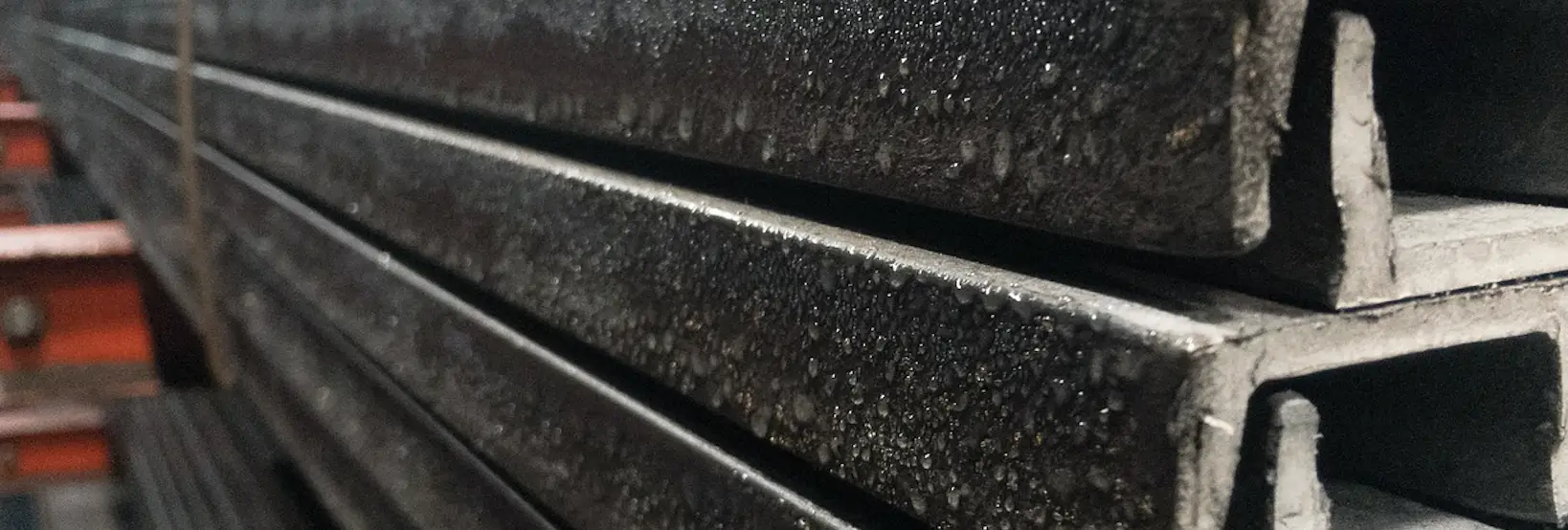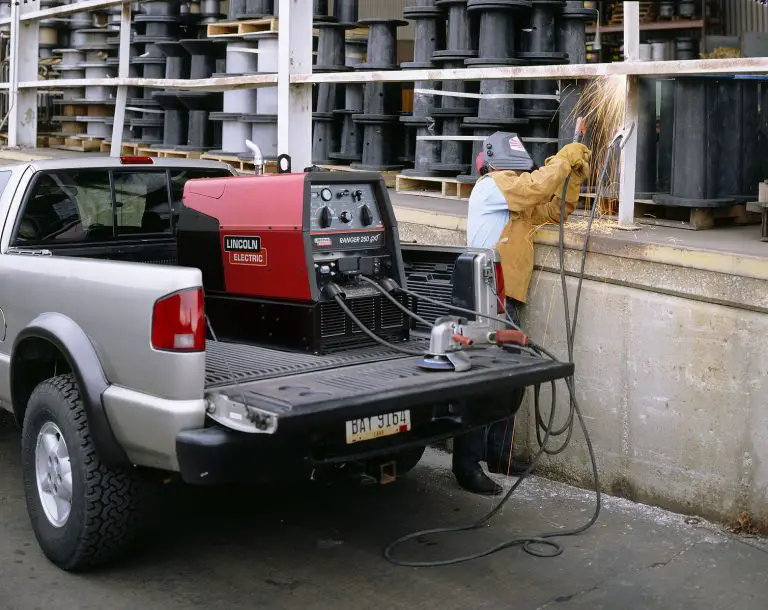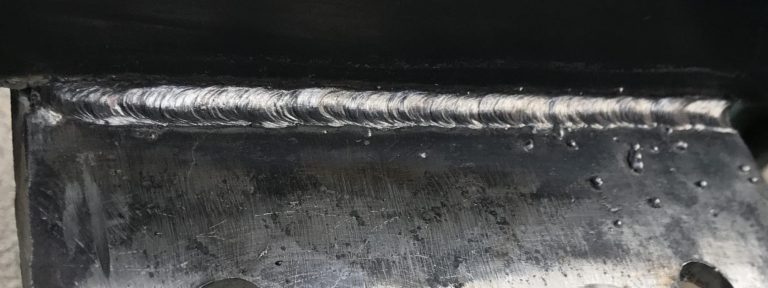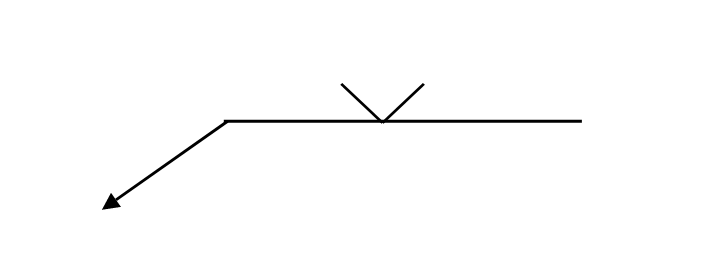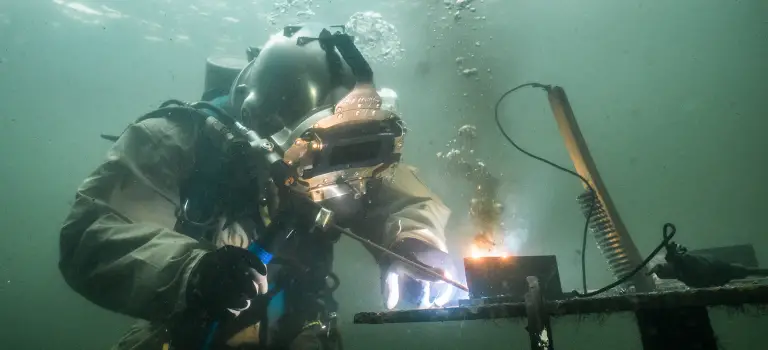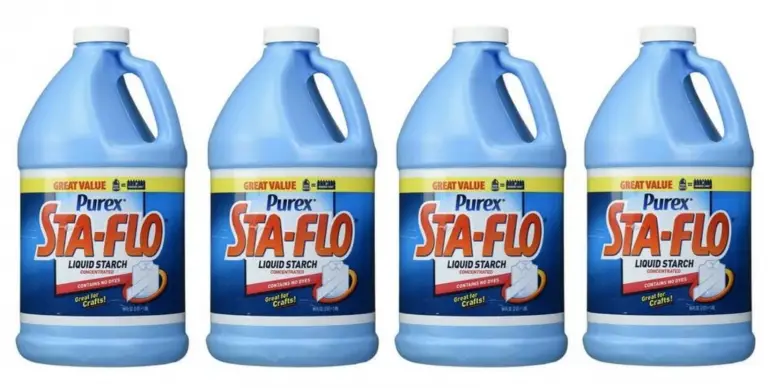Mill Scale – Should Welders Remove It?
This post contains affiliate links.
Mill Scale
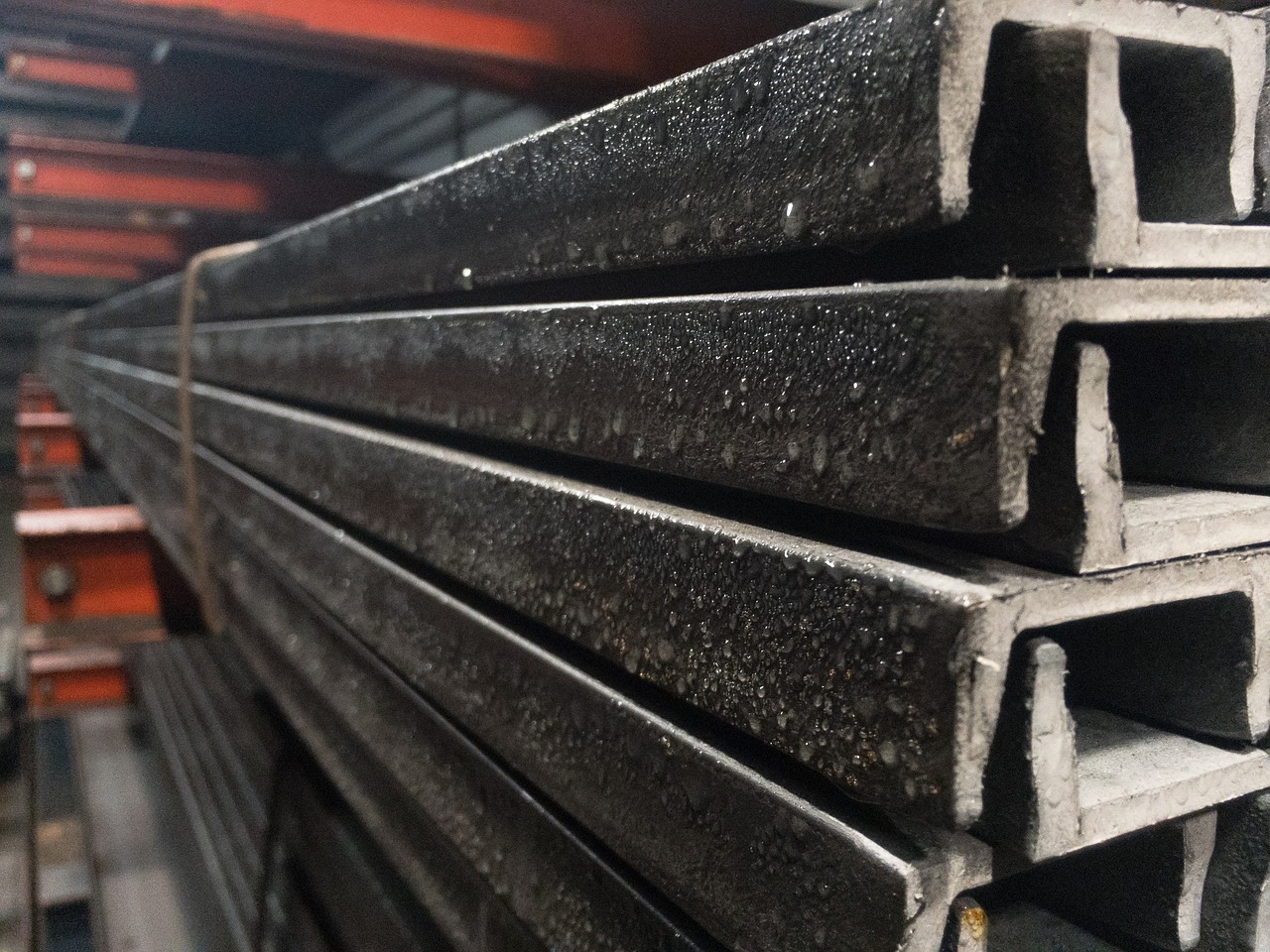
Found on hot rolled steel products, mill scale is the grey/black coating left over from the steel manufacturing process. Rolling mills push molten steel into final products: tubes, beams, plates, angles and pipe. This is an extremely old school process which accounts for all hot rolled steel manufactured across the world.
This high heat process results in several types of iron oxides being left on the surface of the metal. This has benefits, such as making the steel resistant to elements and eventual corrosion.
This is great for steel yards, who can leave their steel outdoors without having to worry about it getting compromised. The problem for welders is that it can be hard to penetrate through mill scale with certain welding processes.
It is important to understand when to clean and remove mill scale based on your specific project. Having welds crack after you’re done building something special can be an awful feeling. And, going back and reworking your welds is a lot harder than just getting them penetrated right in the first place.
This article will outline the instances where you should remove mill scale, and the times when you can safely weld right through it without a problem.
Mill scale tends to add contamination to any weld. Although it is sometimes minimal, it will always mix into your welding bead. For some instances, this isn’t a big deal. However, for processes like TIG welding, it can really mess up the weld.
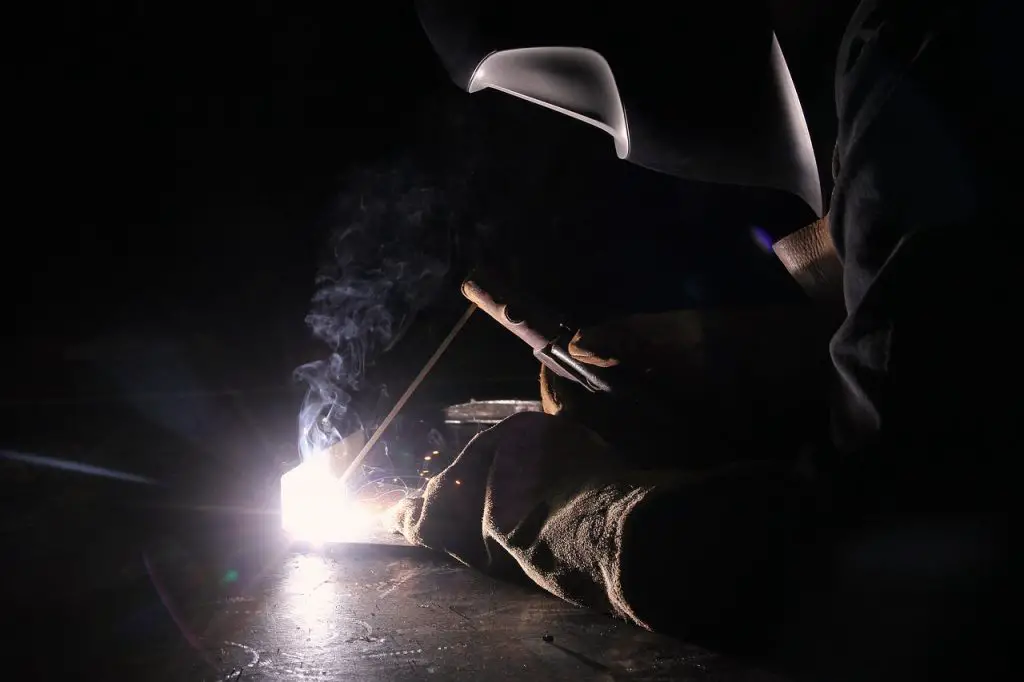
How Do you Remove Mill Scale?
There are a multitude of abrasives that can successfully remove scale coatings. An angle grinder is your best friend when it comes to this type of work.
Though there are removal processes such as pickling or flame cleaning, these are more expensive and more time consuming than using abrasives.
A hard grinding wheel can remove heavy rust and scale, but often digs into the steel too much. This is not ideal for higher quality projects that need to have a nice finish on them. If you dig into the steel, you will have to weld and then regrind to fill up the scratches.
We tend to opt for resin fiber sanding discs offered in different grits. A 36 grit disc can get rid of just about any coating, while 50, 60, and 80 grit discs can put a nice smooth finish on steel projects. These discs are usually 4.5″ which is standard for most angle grinders.
These discs are nice because they aren’t as aggressive as a hard wheel. If you keep the angle grinder flat, you can remove the coating without harming the steel underneath. These resin discs are a top choice of fabricators around the world. Having them in your tool box is always a good idea.
For removing scale on smaller steel pieces, resin discs come in 2″ and 3″ sizes for pneumatic (air powered) grinders. This can be nice if you’re removing mill scale in tight quarters or inside steep angles. Sometimes, standard angle grinders are too large and bulky for finer projects.
These pneumatic grinding processes will require you to have a decent sized air compressor. This can get pricey for the average hobbyist. However, if you have access to an air line then a pneumatic grinder will give you a great advantage on smaller steel pieces.
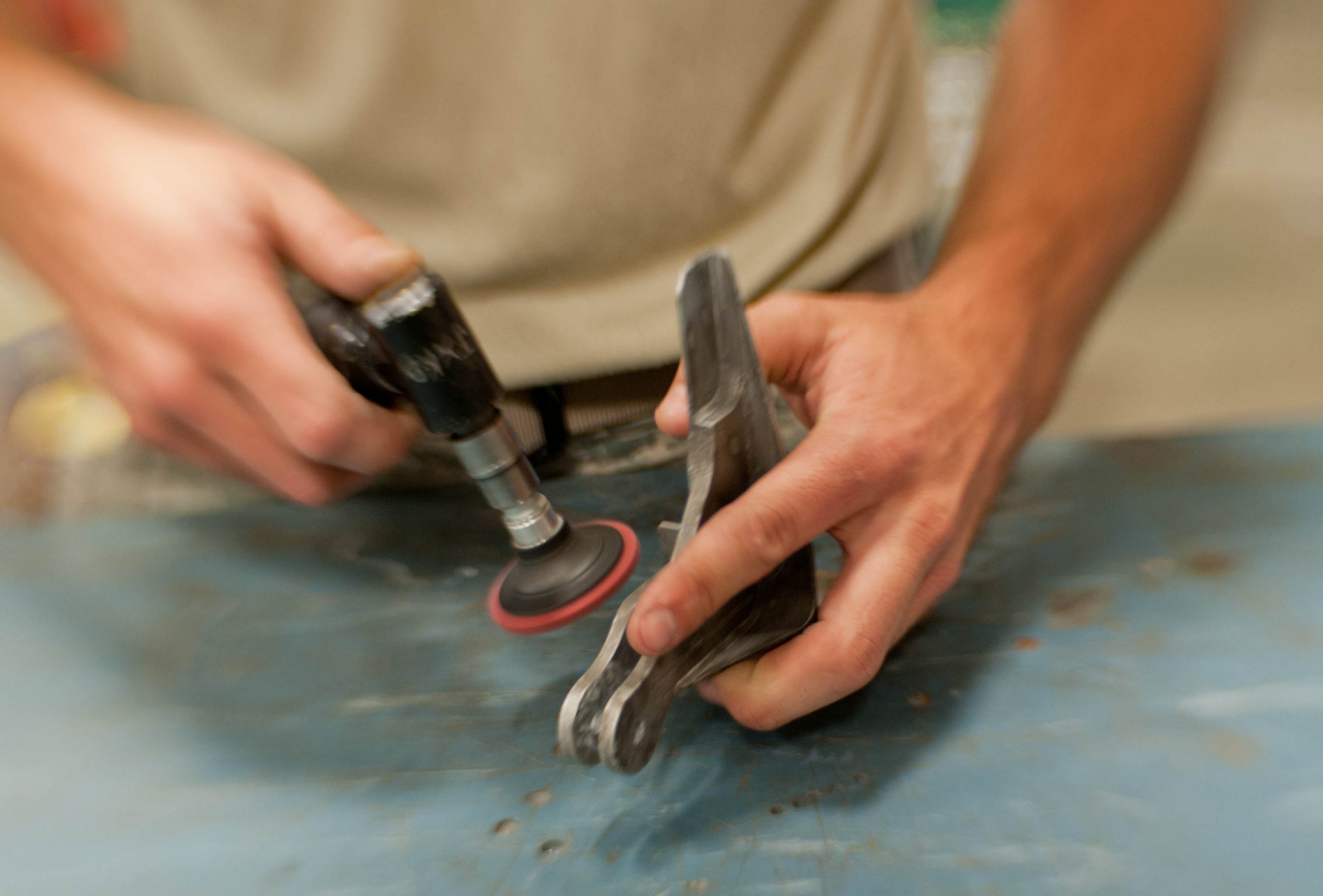
Stick Welding Through Mill Scale
Stick electrodes are known for their extreme ability to penetrate steel, even in adverse conditions such as rain and snow. They are very convenient due to the fact that you don’t need gas bottles or a bunch of extra equipment.
However, standardized AWS stick welding tests will require perfectly cleaned metal, to add insurance that your bend test won’t fail.
For most fabrication and repair work, stick electrodes can tackle scale coatings with ease. Low hydrogen rods (i.e. 7018’s) are known for their high ductility and break strength. They produce a strong weld, but they don’t penetrate mill scale and steel as well as some other rods.
Cellulose rods (i.e. 6010’s) are much better at penetrating steel and digging through mill scale.
While you may want to clean scale for some 7018 welding applications, 6010’s and other cellulose rods can penetrate and dig through mill scale, rust, oil, and even light paint. These are ideal for farm work and heavy repair jobs.
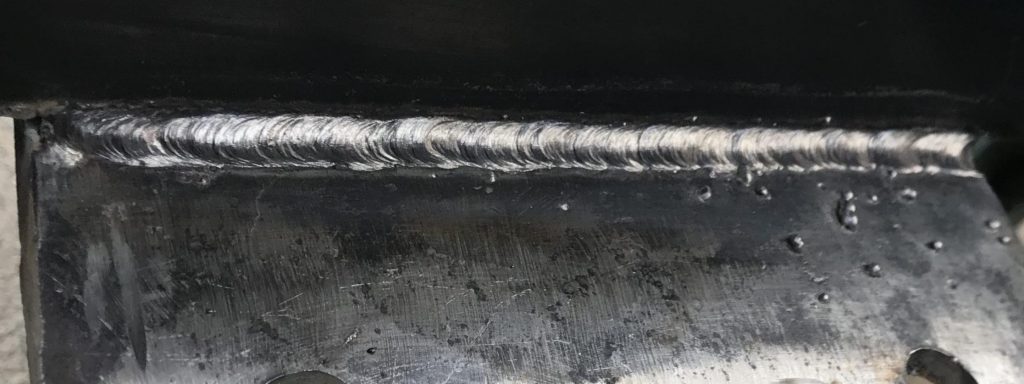
For projects that require maximum strength, cleaning your steels surface is always an easy way to ensure adequate penetration. This decision just comes down to personal preference, or if your job really requires it.
For critical scenarios where the weld will be x-rayed or bend tested, removing the mill scale is the only way to go. If you weld on cleaned steel, there is much less of a chance of weld defects. This is why pipe welders always have cleaned pipe joints.
If you plan on doing hobby work and small fabrication projects, you don’t need to worry about cleaning the metal too much. As long as there isn’t excessive rust or debris, you should be fine.
MIG Welding
You can usually get away with MIG welding through mill scale if your voltage and wire speed are set high enough. However, light duty hardwire MIG tends to be a more brittle weld; and doesn’t penetrate mill scale very well.
If you are planning on doing MIG fabrication work, grinding off the scale can be beneficial and offers peace of mind.
Flux cored wire tends to penetrate a lot deeper, and is great for digging through scale and even light rust. These flux features are similar to a stick rod.
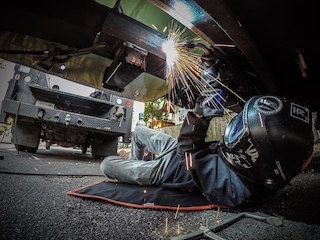
Dual shield flux core is the best route if you want to burn through any scale with ease. The double shielding gas properties allow for maximum dig and penetration. Structural workers rarely grind off the scale on I-beams and larger construction pieces.
With dual shield MIG, your wire has a flux and you are also using a gas cylinder. This double shielding action provides wide beads with adequate penetration. It is especially useful when welding on thick steels.
TIG Welding
TIG welding requires a very clean surface to begin welding. Any sort of contamination will make your TIG weld look like a series of cornflakes. This is due to the fact that a TIG weld only penetrates well if there is nothing in the arcs way. You must have clean, raw material.
We recommend finer 60 or 80 grit sanding pads to remove the scale for TIG processes. A smooth finish (free of contaminants) will help your TIG welds penetrate a lot better. After sanding, hitting the metal with a fine flap disc will ensure a perfect work surface.
TIG welding is definitely a niche, and the arc characteristics are reluctant to any interference. TIG welding without mill scale in the way ensures a super fun experience. Keep that tungsten clean as well!
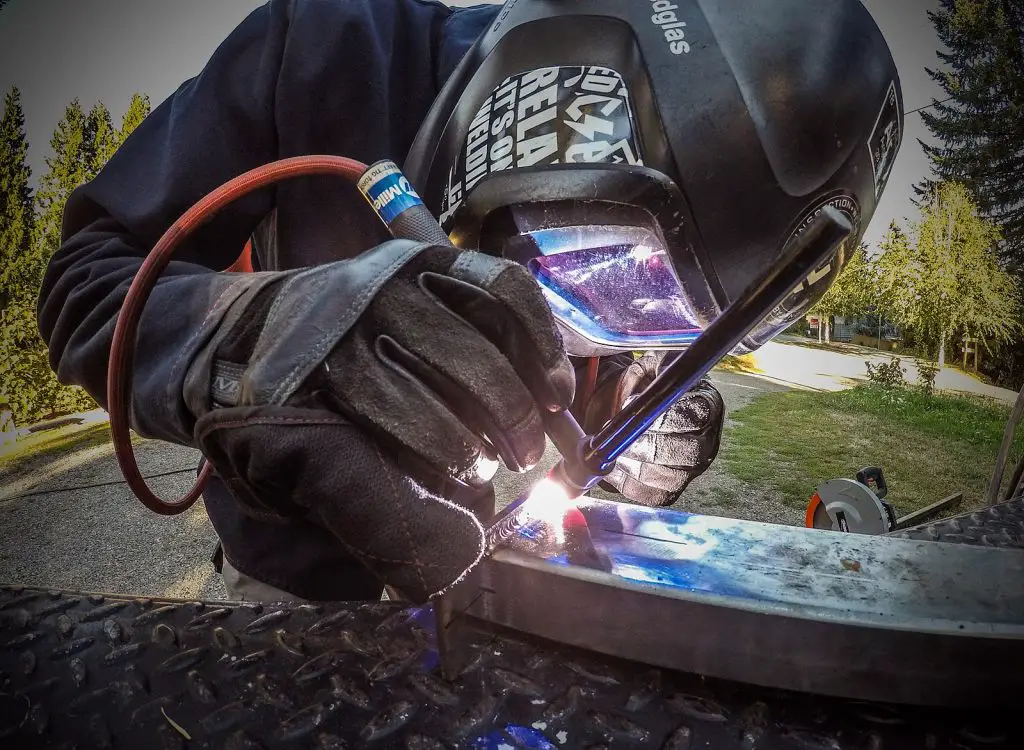
Since TIG welding can only be done well if the mill scale is removed, it can be more time consuming to prep your material. Every joint you plan on welding will need to be cleaned properly.
For this reason, many welders shy away from the TIG process if they have time constraints. However, learning to prep steel for TIG welding is one of the best ways to practice removing mill scale.
The time you spend using different abrasives and grinders will send your skills to a new level. Learning to prep and fit up material is just as important as the welding itself. If you want to get really good at removing mill scale, try fabricating a project using only TIG.
Other Metals
Mill scale coatings are generally found on regular mild steel. This is the most common and affordable type of steel on the market.
Cold rolled steel is a more expensive product, and it does have a light scale coating. However, it is nowhere near as thick as the scale on mild steel. Since it isn’t rolled out using heat, the coating that is left over is much more minimal (less oxides).
Aluminum does not come with mill scale. It does require a brushing with a stainless brush to clean it, but that doesn’t take much time at all. Prepping aluminum usually goes pretty quickly.
Stainless steel has a coating as well, but it is much easier to clean than normal mill scale. A quick once over with a resin disc will make it ready to weld. Stainless steel is much more resistant to rust and corrosion, so a heavy scale coating is not necessary to protect it.
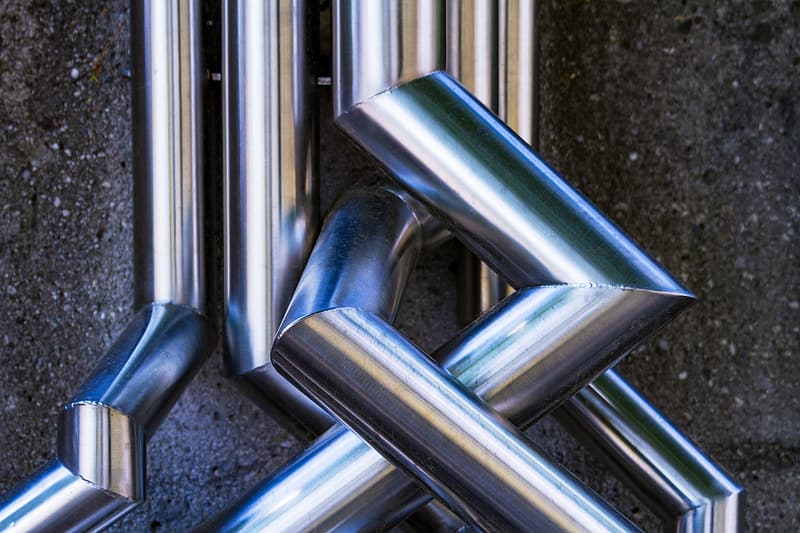
Other Instances
In the professional welding world, there are more strict procedures in place. Project managers and engineers may require the removal of mill scale, or extra bevels placed on joints to ensure weld penetration.
If you are a shop fabricator or a single hand field welder, you will have to follow the procedures set in place by your company. These vary greatly in different welding industries, but should be taken seriously by all employees and welding inspectors.
For weld joints that cannot ever break, such as pipe welds and aerospace welds, removal of scale and metal contaminants ensures safety for everyone involved. Pipe welds breaking can lead to oil spills and all sorts of tragedies.
However, most of us doing hobby projects will not have to worry if we have cleaned the metal perfectly. A proper weld can last for a very long time and can leave you feeling confident that your hobby projects won’t crack or fail on you.
It is always good to keep a few angle grinders around with different discs. When you need to remove mill scale, paint or rust – you’ll be happy to have the right tools.

